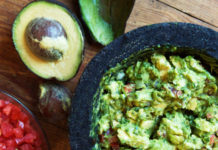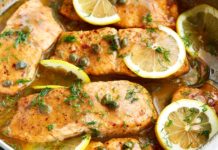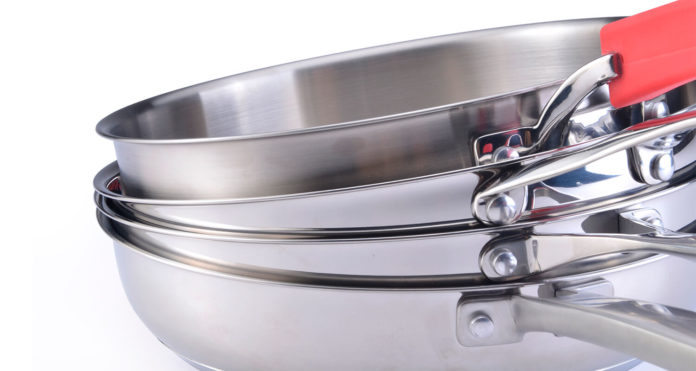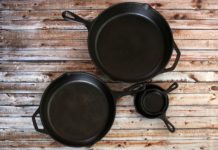Just getting started on your adventure to becoming a home cook? Need some help with all of the different types of pots and pans? Fear not, we’ve got you covered! There are several types of cookware from metal to glass and enamel to cast iron but we are going to focus on the basics, which consists of Stainless Steel, Non-Stick (Teflon) and Cast Iron.
Stainless Steel
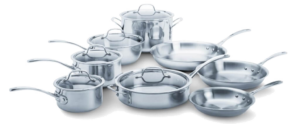
Triply stainless is the most basic. Although it’s not always ideal, it’ll generally work, because it’s not reactive, and if good quality, the heat distribution is good. In general, it’s claimed that different cooking styles require different cookware (for example, a cast iron skillet is considered top notch for searing).
Stainless pots and pans are often reasonably priced and have these advantages:
- Durable—they will not peel, chip or vaporize (as do nonstick pans)
- Longer-lasting than ceramics and earthenware
- Rust-proof—unlike cast iron and carbon steel
- Aluminum-free
However, unlike ceramic, enamel and earthenware pots, stainless steel is mildly reactive, which means that some of its nickel and chromium leaches into your food as it cooks. For non-reactive cookware options, see Healthy Cookware. For cookware to avoid, see: Toxic Cookware and Cutlery.
If you want to start out with a good base that’ll allow you to cook and perhaps pick up more pieces as you see the need, I’d recommend this Tramontina set from Walmart, it’s about $130 for a small set. Now, sets are usually not recommended, but this seems to be the exception because this set pretty much only has the essentials, and it’s a good enough deal that even if you weren’t using all pieces it’d still be a good deal. From what I’ve read, for general use, you won’t easily notice the difference between this set and better ones, and it’s priced much, much lower.
So which one is the best, everyone has tons of opinions on cookware (I’m speaking as someone looking to obtain cookware without breaking the bank, who is obsessive about picking up information). However, most people seem to agree that the Tramontina set is a good starting point. (All clad and Demeyere are considered better, but I detest All clad’s handles, and doubt that either of them are enough better to justify the cost to most of us).
Depending on what you like to cook, you can also pick up more pieces. They can be different sizes, different shapes, and different materials.
Wok’s
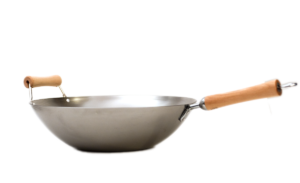
Some people like woks, and they can indeed be very useful. Woks are traditionally used on very high heat (as high as your stove will get, although higher is preferred), so carbon steel is preferred. Do not get a non-stick wok, as non-stick is not supposed to be used on very high temperatures. Woks are generally liked for Chinese cooking, but I also adore it for deep frying (with the ultra long Chinese cooking chopsticks to keep me away from the splattering oil). Pick up a cheapo one at a Chinese grocery store.
Cast Iron
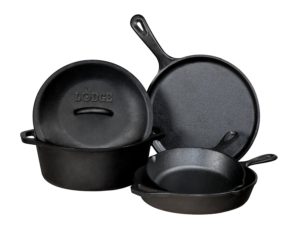
Another optional piece of cookware is a cast iron skillet. This is considered top notch for searing steaks, etc. Some people claim that cast iron has even heat distribution. This is false. However, cast iron does retain heat well, making it handy for very high heat cooking. I suspect that you could do some wok cooking in a cast iron skillet pretty successfully. If you have an electric coil stove, however, the heating element retains enough heat that you might not notice the difference between this and a wok for heat retention. Lodge is the name to look for here, generally. These aren’t very expensive.
If you want to get carbon steel or cast iron, however, you’ll need to learn how to season them. This isn’t hard, but you might want to wait until you’re not so busy with moving. There’s less contention there, fortunately.
Non-Stick
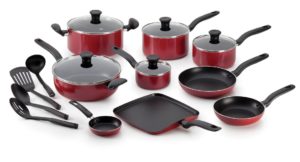
A non-stick pan is another item a lot of people like. Non-stick is best used on low to medium heat, because Teflon stops being inert at something like 500 F. Anyway, it’s favored for eggs, fish, and other delicate items. Don’t use metal utensils with it, which could scratch it. If you like bargain hunting, drop by TJMaxx/Home Goods or Marshalls and look for TVS pans. They are really, really nice, and very cheap there. They are made in Italy, and usually hard to find in the US. They are also worth it full price. Otherwise, look for a pan with thick aluminum, because it’ll have better heat distribution. Also, non-stick pans will lose their coating over time and need replacing.
Clearly, there’s more specialty cookware, but I’d recommend first getting the Tramontina set and perhaps a nonstick pan, get moved in, cook, and figure out what you want to do that your current cookware makes more difficult.
Oh, and if you don’t have knives, I like Kiwi brand knives. Look for them at your local Asian markets, or order them online. They are super cheap, but quite good for the price. Maintain them with a sharpening steel often, and periodically sharpen them, ideally on a sharpening stone. In a pinch, sharpen them on the bottom of a ceramic mug (I’ve done this for two years with my knives, and they are sharper than out of the box). Don’t sharpen a Kiwi knife with a pull through sharpener – the angle of the edge is much steeper, so it won’t work well, unless it claims to be for asian knives. A lot of people are fond of Victorinox knives as decent starter knives, and those can be used with pull through sharpeners. They are cheap by knife standards, but much more expensive than Kiwis.

